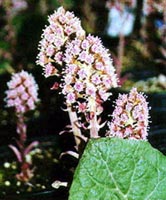 In an earlier post, the effectiveness of butterbur (Ze 339) was reviewed and found to be as effective as the antihistamines, citirizine (Zyrtec) and fexofenadine (Allegra) to treat the runny nose; sneezing; congestion; and irritation in the nose, eyes, throat, and ears associated with allergic rhinitis.
In an earlier post, the effectiveness of butterbur (Ze 339) was reviewed and found to be as effective as the antihistamines, citirizine (Zyrtec) and fexofenadine (Allegra) to treat the runny nose; sneezing; congestion; and irritation in the nose, eyes, throat, and ears associated with allergic rhinitis.
Now, here are the results of a survey of 580 patients with seasonal allergic rhinitis treated with an average of 2 tablets of Ze 339 daily for 2 weeks.
- 80% said it was effective
- 92% found there was no downside to taking Ze 339
- 80% said their quality of life improved
- 3.8% had an adverse effect
- Nonspecific GI effects were most common
One more thing.
Taking antiallergic medication with Ze 339 did not result in a better effect than was attained with Ze 339 alone.
Adverse events occurred at a rate of 3.8%, mostly nonspecific gastrointestinal complaints.
For completeness however, a recent review states that there are four reports of people getting reversible cholestatic hepatitis, which was probably (not definitely) associated with long-term use of butterbur (incidence of 1:175,000 people). It is unknown which components of butterbur are responsible for this long-term liver toxicity.
Photo: Herbs & Roots
9/17/06 21:44 JR